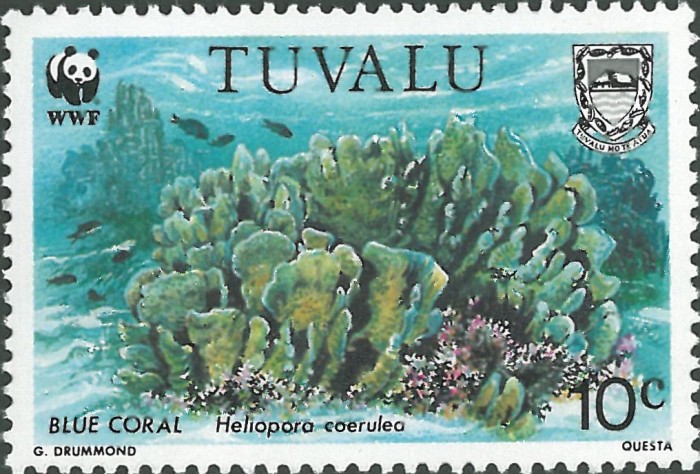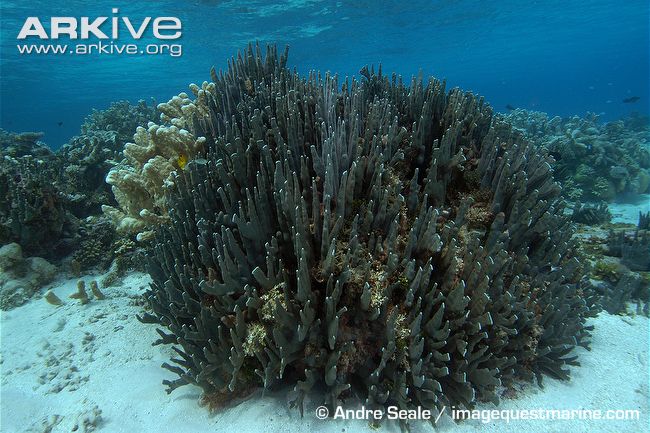Editor’s note: This post has been updated and broken links removed. Please see our policy on broken hyperlinks for more.
In honour of “Jewel Day“, a quirky national holiday that is hidden among other random holidays in the US, I wanted to write about a material that Florence of Florence’s Jewel Shop uses in several of her pieces: Blue coral (Heliopora coerulea).
The blue coral is a majestic animal that has long since been admired. It was admired so much that in 1992 they made a stamp featuring a blue coral reef for the tiny island of Tuvalu in the Pacific Islands. It’s gorgeous, yes, but what makes it so special?
Blue coral has a skeleton made of aragonite, and it also has the distinction of being the only species in the Helioporidae family, and the only Octocoral known to produce a massive skeleton . The coral is on the species “red list” as vulnerable . In fact, they are plentiful and common throughout their region, even if they are locally scarce in some places. They are most commonly found off the Ishigaki Island in southwest Japan. Blue coral are, however, thought of as vulnerable due to their fragile nature and conditions.

It’s the blue coral’s habitat that makes them vulnerable.
Blue coral thrive in a shallow depth range, which makes it susceptible to bleaching. On to of random localised events (brutal storms, earthquakes, etc.), harvesting for aquarium and curio trade, and the extensive degradation and reduction of coral reefs in general marks the H. coerulea as vulnerable.
Now, before you get yourself in a tizzy about that blue coral bracelet you bought from Etsy three years ago or the blue coral in our shop know that the population trends of the blue coral are practically a mystery. Reduction can be inferred from the the decline of habitats, but that is not a solid number. On top of that, many things labelled as “blue coral” are not truly the vulnerable H. coerulea species, but instead another type of coral that is died blue.
Still, we like to err on the side of caution.
True blue corals of the H. coerulea species are governed and restricted by International Trade Agreements and have been since 2001. This not only controls the trade, but also monitors the environmental impacts of those areas where the corals are legally taken from. (There will always be black market dealings, so be wary of that.)
So, where does Florence get her coral from? She sources it directly from India and other tropical islands in the South Pacific. For her, vacation time is also shopping time. It’s all ethical, legal, and guaranteed to be environmentally sound. How can you tell? Well, short of striking up a conversation with her, you can tell by the price. Economics of supply and demand, m’dears. As the supply is tightened, the price of ethically sourced items goes up to prevent people from over buying it.
Bibliography
